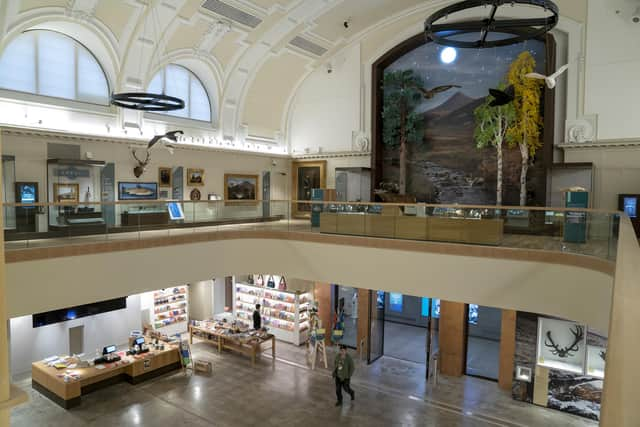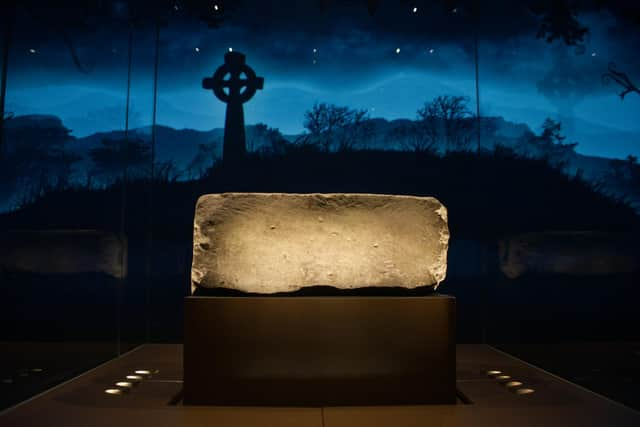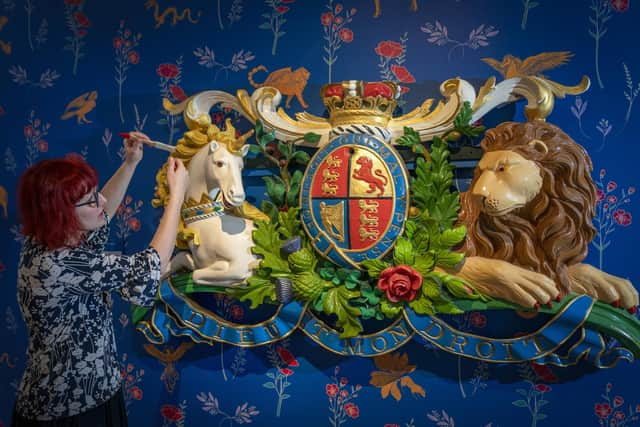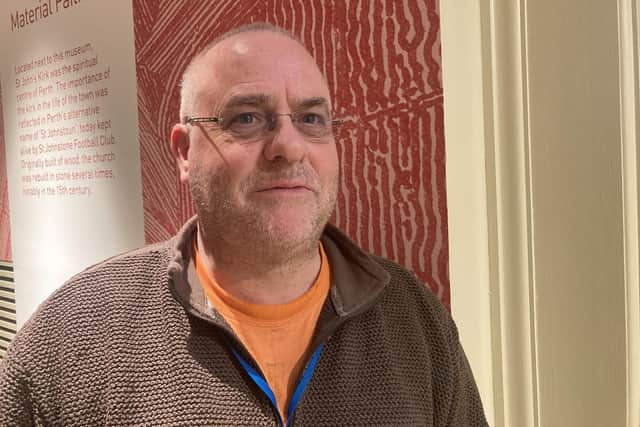Perth Museum: A deep box of delights opens up for city and nation
At the heart of Scotland sits Perth and at the heart of the new Perth Museum sits the Stone of Destiny, the potent symbol of nationhood that has, in a sense, home to where it is was used in the coronation of Scottish kings at nearby Scone Abbey.
The new Perth Museum is a a museum for the city, a place where kings were made and where Kings were killed and where its medieval streets and vennels defended by city walls were alive with makers, traders, religious belief and royal influence.
Advertisement
Hide AdAdvertisement
Hide AdBut the automatic appeal of the museum, which contains up to a quarter of a million items, stretches far beyond the city’s limits as Perth becomes a filter for the nation’s historic timeline, from the weapons and tools of the Neolithic to the spiritual beliefs and practices of the Bronze Age – told through artefacts recovered from the River Tay – to the Picts and their mighty stones engraved with beasts and Christian crosses.


Then, comes the Stone of Destiny, likely brought by Kenneth I, the first King of Scots, to Scone which he made capital of his new Kingdom after bringing Pictland under control. On the stone he sat – or stood – in 843. With the museum due to open to the public on Saturday, Dr Mark Hall, collections officer at Perth Museum, said the Stone of Destiny, brought to Perth from Edinburgh Castle, was “fundamental” to the museum’s story – and its success.
“It is here, right in the middle of the museum and all the stories wind around it – and it all meshes together. The whole story is connected and we hope that people will appreciate that,” he said.


One whether the museum was created for Perth or for Scotland, he added: “I don’t think the two necessarily are incompatible. In my experience of museums and how they work, if they work for the local community then they are going to work for everyone else. You get a sense of place, that it is part of a community, and that speaks so much to people who come from other places , from Scotland or around the world
"Local feeds into national, feeds into international.”
The Stone of Destiny sits in a new pavilion built for the museum, which has emerged from the redundant City Halls. The rebuild cost £27m, with £10m coming from the UK Government, and designed by architects at Mecanoo, a practice based in The Netherlands which recently designed the new Natural History Museum in Abu Dhabi.
In the pavilion, visitors are first immersed in an audio visual telling of the Stone of Destiny’s history and mythology before being led towards the star artefact. It is given a new depth of meaning at Perth, where the coronation of boy king Alexander III, who was crowned on Moot Hill at Scone in 1249 aged just seven, is recreated all around.


Less than 50 years after the inauguration of the boy king, the stone was stolen from Scone when the abbey was ransacked by Edward I in 1296. Step outside the pavilion, and a scale model of the abbey keeps you pinned in the story.
Mr Hall said: “They didn't destroy the building but they tried to take away everything that could signal any retention of authority here in terms of the Scottish crown. Holy relics they took away, the Stone of Destiny they took away, manuscripts they took away.
Advertisement
Hide AdAdvertisement
Hide Ad“Edward loathed the idea of Scone as a place of authority so much that just before his death he applied to the Pope for permission to totally demolish the abbey and to rebuild it in the north of England.
“You can imagine that caused huge amounts of anxiety everywhere. He was probably a lone voice in wanting to see that happen and thankfully there was a lot of bureaucratic ‘we must check this, and we must check that’ and then he died, so it became a non issue. But it shows the extent that he was prepared to go to.”


Scone Abbey was later destroyed in the Reformation, a period also told through Perth as the city’s medieval past is explored. On the wall hangs a portrait of St Bartholomew, retrieved from St John's Kirk where John Knox preached his sermon against idolatry on May 11, 1559. The congregation was so inflamed they stripped the place of its ornaments and then stormed out of the church, sacking Perth’s wealthy religious houses. The Scottish Reformation was now well underway.
St Bartholomew was the patron saint of the Glovers Incorporation – the makers of gloves from animal skins – which was active in Perth since at least 1210.
From the portrait, the museum takes us into the medieval streets, with items from amulets to combs and the tools of fleshers and farriers sitting alongside the imported silks of the rich in the royal burgh, where the castle built by David I on the banks of the Tay was washed away by a flood in the early 1200s.
The castle was never rebuilt but James I later took an apartment in Blackfriars Abbey after he returned from England, where he had been held captive for 19 years. It was here he was assassinated, some say in his nightgown, by a rabble of angry nobles.
While the royals didn’t fancy Perth much after the killing, the royal story continues to be explored at the museum in its first visiting exhibition Unicorn, with the mythical beast deployed by the Stuart dynasty as the national animal and a symbol of strength and purity.
In the new Perth Museum, a new national treasure may well be found.
Comments
Want to join the conversation? Please or to comment on this article.